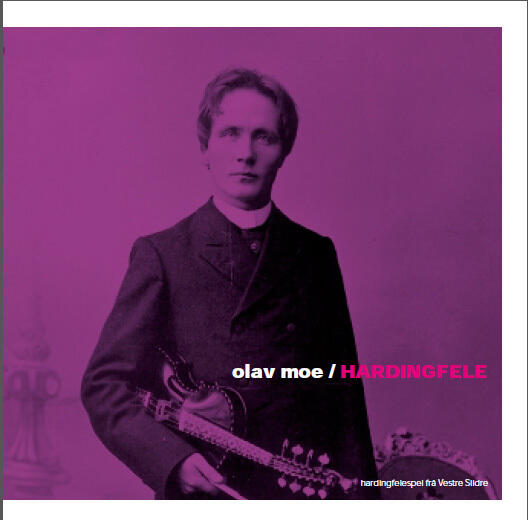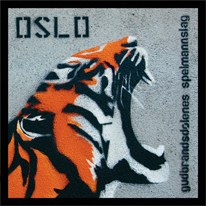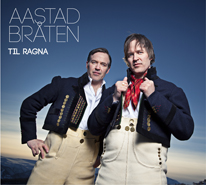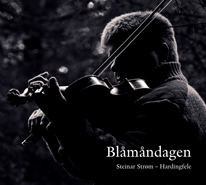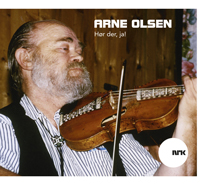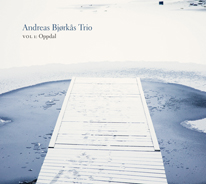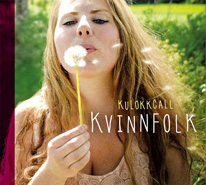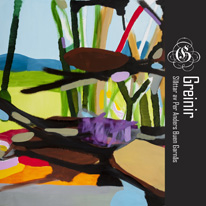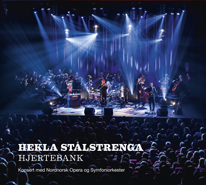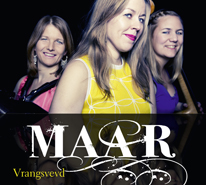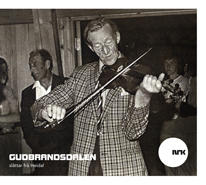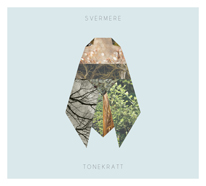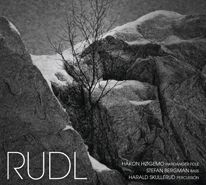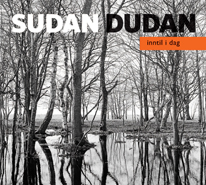Konsertspelemannen
Då den nye kongen kom til Norge i 1905 var det Olav Moe som vart henta inn for å presentere "nasjonalmusikken" for han. Olav Moe spelte inn i eit 30-tals opptak for NRK i 1937, opptak som er overraskande gode med tanke på lydkvalitet. Kutta dokumenterer ein gamal spelestil med spanande tonalitet, og eit friskt spel. Olav Moe var også den første redaktøren i avisa Valdres, varamann på Stortinget og landskjend folketalar.
Concert fiddler and carrier of tradition
Outside Valdres Olav Moe is principally renowned for being one of last century's outstanding concert fiddlers. These fiddlers played national music professionally. The genre was named during a time in which chosen elements from rural culture were held forth as nation building symbols.Lively social and musical bonds of ten occurred among the touring fiddlers. Confronting a broader audience they developed an alternative repertoire.
The performers remade old tunes and used a modernized musical language when making new pieces, often by using violinist techniques like the vibrato Not uncommon, the fiddlers also spiced their performances with more or less musical imitations of domestic animals and birds. These fiddlers were inspired by both their immediate surroundings and other contemporary music, and hence developed a sound differing slightly from the traditional characteristics of the Hardanger fiddling However, these elements never became part of the tradition But the special pieces, the listening tunes and the remakes live on
Whether elements of this music were considered gain" or simply strange elements by contemporaries in the traditional music is hard to say No doubt the national romantic traits of the times have left lasting traces in the music itself as well as In our way of relating to It.
Listening to the music within these perspectives makes this release particularly interesting The chosen material presents the performer at the height of his career Even though he is regarded as a concert fiddler and took part in developing this characteristic style, the tunes and the instrument are handled in a slightly different way here Few violinist cliches are found, and traits corresponding to our idea of the national romantic are scarce
This material, though, is not representative of what Olav Moe performed on stage The recordings are done by the Norwegian National Broadcasting. This context can not be compared to a concert Instead, a different Image of the fiddler and his repertoire emerges
Not exaggerating, one could consider this music part of an old style The way of playing does not always use common intervals. The tunes are richly ornamented and characterized by a pre-touch reaching from a loose string up to third finger on the g or the e-string
There are obvious parallels to Moe's contemporaries in Valdres and generally the entire Hardanger fiddle areaPlay on one string is also found, particularly with a tuned down g-string, fairly common in Valdres Play on one string seems to go with certain kinds of tunes, but there is reason to think that it occurs due to individual preferences as well Besides the steady change from one to two strings, what is striking about the selected tunes is the difference in intensity and speed.
Comparing Moe's general expression to what is heard on the traditional stage today, the change toward a purer ideal in sound and melody is obvious Whether this is to be considered a gain or a 10"" depends on who is asking and how the question is asked No doubt, both people and music tend to change with time and setting. Whatever is labelled old or new, romantic or authentic, on this release the Valdres fiddler Olav Moe stands forth as a performer rooted in solid tradition. At the same time, it shows Olav Moe's ability in different expressions, and makes obvious his own distinction between concert pieces and a traditional repertoire
Most of the Olav Moe recordings bear traces of him as an elderly man when they were taped. The ones on this record are earlier ones, done in 1937. We have chosen to enhance the character of this particular material, contrary to a complete introduction to his playing.
/ Anders E. Røine
TA1CD: OLAV MOE \ hardangerfiddle
Olav Moe was born 1872, son of Mikjel Moe (1849-1934) and mother Marit Pedersdatter Neste (1850-1878) We do not know exactly when he took up fiddling, but by his own account he played for dancing in his early teens. His father being a fiddler, he probably learnt the first tunes at home. Olav Moe lost his mother at six, and grew up on the farm Øvre Neste in Vestre Slidre, with his dad and his mother's unmarried sister and brother.
Olav Moe played in the Jørn Hilme (1778-1854) tradition. Jørn Røn (1843-1911) was one of the wellknown fiddlers who taught him. He was son of Knut Ringestad (1815-1854), who had learnt from Jørn Hilme himself. Olav Moe heard Jørn Røn for the first time at a party held by a local society at Timan's in Skrøviken. The young boy was impressed by the fiddler.
"A straight and unusually handsome man with a good complexion and a smile on his face. I stood on the wall beside the window and looked inside between the tunes. He'd hung his red coat on a knob, and sat in his red sleeves. Sitting there playing, he appeared to me like a beautiful God. Tingling nice, it sounded to me it was sheer adventure".
Olav Moe learnt a lot, too, from Ola Hamre (1819-1896), also called Ola in Hamrisbrøta. Other fiddlers that deserve mention are Ivar Ringestad (1870-1953), Ulrik in Jensestogun (1850-1919) and Ola Haugset (1809-1891).
At an early stage, Olav Moe got in touch with fiddlers from other areas. In 1897, he played in the Vestmannalaget kappleik in Bergen. Later he participated in the same competition in 1900, 1902 and 1904. He met the fiddlers Torkjell Haugerud (1881-1954), Kjetil Flatin (1879-1960), Ola Mosafinn (1828-1912), Magnus Dagestad (1865-1957) and Sjur Helgeland (1858-1924) Olav Moe made good friends with Sjur Helgeland in particular, and when he married Christine Charlotte Lund (1878-1934) in Bergen in 1904, Sjur Helgeland played. During a Vestmannalaget kappleik,Olav Moe met Edvard Grieg. Grieg said to him: You must travel and learn the all different tunes possible, and keep them pure and real. These tunes will have to be the ground on which the future Norwegian music must be built ".To finance these travels, Edvard Grieg advised Olav Moe that he should tour and give concerts. This was the initiation of Olav Moe's many concert tours in and outside of Norway. In 1905 and 1906 he gave many concerts in the major towns of southern Norway. His program included famous pieces like St. Thomasklukkelåtten, Rotnheirns-Knut. Myllargutens rneisterstykkje, Kivlemøyane, Fanitullen, Huldrejentenes lokketonar og Gjenta ved vogga. In September 1906 Olav Moe and his wife took off to the United States on a concert tour. Here, Olav Moe met the fiddlers Hans Fykerud (1862-1942), Gunnleik Smedal (1878-1948), Halvor J. Lid (1858-1907), Olav Napper (1833-1922), also called Traskjen, and Eivind Aakhus (1854-1937). Olav Moe gave many concerts on the East Coast and in the Midwest and did not retum to Norway until fall 1907. Other tours abroad that deserve mention are the ones to Denmark in 1911 and the winter of 1914-15.
In ApriI1908, Olav Moe and Charlotte Lund moved to the farm Hogner in Aurdal, this time for the rest of their lives. They had two sons. Magne Hermand (1908-1933) and Frode Gudvin (1912-1985)
Olav Moe had several fiddles, but preferred one in particular. This was the fiddle made by woodcarver Ole A Granheim in Ulnes, in 1891. Olav Moe built his own fiddle in 1891.
Olav Moe had a geat concern for community matters. He participated in establishing the local paper Valdres in 1903, and had the editor's responsibility until 1905. Likewise, he was the initiator of an institution of agricultural sciences, established on the farm Løken in Øystre Slidre. For several years he headed the Agricultural Society of 0ppland, and he worked towards establishing the Valdres Agricultural College in Leira, Nord-Aurdal. Olav Moe went into national politics as well. At first he supported Det radikale folkepartiet, and for a period of time met as a vice-member of parliament. Later he joined Fedrelandslaget. He was a gifted speaker, and is remembered for his strong debates and clever comments. Olav Moe died an old man at 95. His mind never faded. Near the end of his life, he had to go through seven surgeries. On one occasion, the doctor was in doubt about the use of a surgery. Olav Moe said: Cut it out, and throw it away. Olav Moe was given several titles of honour, the highest being His Majesty King Haakon VII's gold medal. 0lav Moe passed away 11. August 1967.
/ Tore Bolstad
The tunes:
1. Det sat ei kjæring i Bergsenda og mol snus, låttestev. (284 kb) Bergsendin is a cotters farm belonging to the farm Hjelle in Aurdal.
2. Springar etter Jørn Hilme, (g.d.a.e) The tune is also called "Sørre Myrelåtten" (2628 kb)
3. Halling etter Jørn Hilme, (g.d.a.e)
4. Vårflaumen, springar (g.d.a.e)
5. Tussebrureferde, listening tune (g.d.a.e) In Valdres this tune is also called "Røven" (The fox) or "Kjenne du røven, lambetjuven" (Do you know the fox, the lambthief). Ivar Ringestad`s version of the melody is called "Søtebroke åt Nertrøsta".
6. Springar etter Jørn Hilme (a. d. a.e). Also called "Ein tå veksaro".
7. Springar etter Ulrik i Jensestogun (adae).
8. Springar etter Jørn Hilme (a.d.a.e) More often called "Perigarden".
9. St. Thomasklukkelåtten, lydarlått (ad.fiss.e)
10. Sylkjegulen, springar (g.d.a.e). Olav Moe learned the tune from Ulrik i Jensestogun. Ulrik had learnt it from Bendik Toreson Gausåk (Bendik i Nøen) (1827-1882), who made the tune.
11. Springar etter Jørn Hilme (g.d.a.e).
12. Huldrelått frå Vang, lyderlått (f.d.a.e). Olav Moe learnt the tune from Ola Hamre. It is more known as "Grihamaren".
14. Anne Vik, springar (a.d.a.e).
15. Springar etter Ulrik i Jensestogun (g.d.a.e). The tune is also called "Vårduft". Olav Moe learned the tune from Ulrik i Jensestogun. Ulrik had the tune from Ellev Tollevsrud (1840 - 1896) in Sør-Aurdal.
16. Springar etter Jørn Hilme (g.d.a.e). The tune is also called "Purkekragin" (the pig's collar) and "Haldor Røynes minne" . Olav Moe learned the tune from Ola Hamre.
17. Halling etter Jørn Hilme. (a.d.a.e.). Often called "Sjugurd". The tune has an introductory poem which goes like this "Trøste o bære me før han Sjugurd, lite te bisk og slett ingen dugurd". Olav Moe learned this tune from Ola Hamre. (3226 kb)
18. Springar (a.d.a.e) In Øystre Slidre this tune is named "Bustebakkin" after the fiddler Torstein Sveinsson Hegge. He later on took the name Bustebakke.
19. Heksedansen, springar (a.d.a.e). The tune has also been called "Epleskjularen" and "Kjeglesmeden". It was to this tune that the witches danced when they met on the mountain "Blokksberg" at Midsummer Night. Olav Moe learned the tune from Ola Haugset.
The Olav Moe-project:
Recording: Norwegian Broadcasting (NRK) 1937 Project Management: Tore Bolstad, Anders E Røine, Niels J Røine og Frode Rolandsgard. Mastering and technical production: Lindberg lyd AS English translation: Kari Hauge Cover: Eva Karlsson
Financial support: Rådet for folkemusikk og folkedans Valdres historielag - Olav Kirkevolls legat Sørli-legatet Valdres folkemusikklag Vestre Slidre folkemusikk og dansarlag Øystre Slidre spel- og dansarlag Vestre SIidre sparebank Øystre Slidre sparebank
Thanks to: Knut Opheimsbakken Vidar Lande Mona Dalen Mary Hegge Henning Andersen Per Odd Moe


